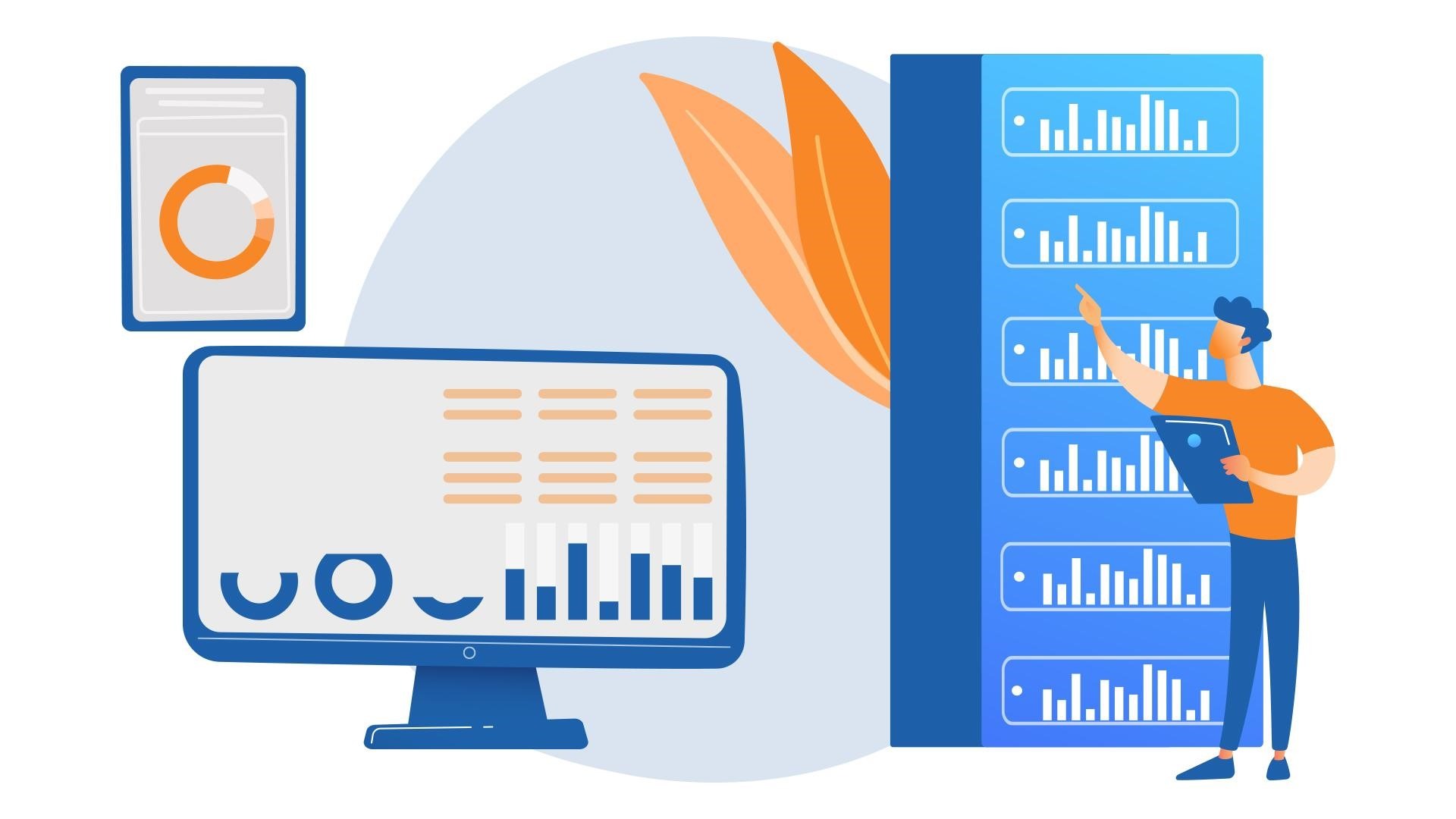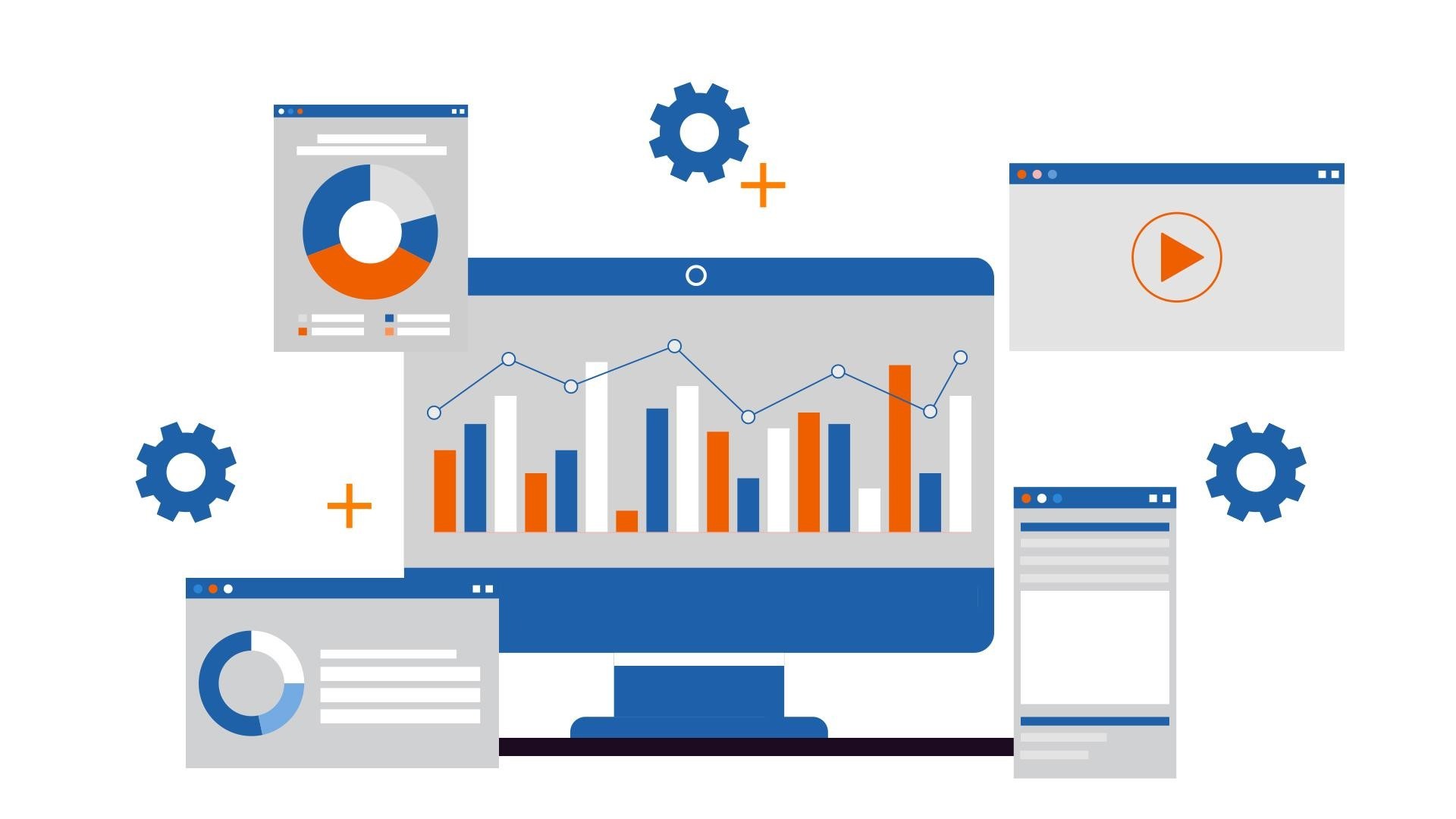In today’s fast-paced and data-driven world, businesses of all sizes rely heavily on performance monitoring and log management solutions to ensure smooth operations, optimize resources, and gain valuable insights. With the ever-increasing complexity of modern IT infrastructures and the exponential growth of data, having robust tools to monitor, analyze, and manage data has become a crucial aspect of maintaining a competitive edge.
Among the numerous options available in the market, two popular and widely recognized solutions are Datadog and Splunk. Both Datadog and Splunk have established themselves as leaders in the field, offering powerful and feature-rich platforms that cater to the diverse needs of businesses across various sectors. Their comprehensive capabilities span performance monitoring, log management, analytics, and more.
We will delve into a detailed comparison of Datadog and Splunk, exploring their key features, benefits, and use cases. By understanding the strengths and differences of these two solutions, you will be equipped with the knowledge necessary to make an informed decision for your business.
“Datadog and Splunk are leading platforms that offer powerful tools for log monitoring and analysis, catering to different needs and preferences.”
Datadog Overview
Datadog is an analytics and monitoring platform built for the cloud that provides comprehensive log analysis and data management features. It offers robust features for application performance monitoring, including operational analytics. Datadog’s machine learning algorithms enable metrics analysis, intelligent anomaly detection, and proactive performance optimization. Users can also create dashboards, visualize data and gain actionable insights using the platform.
Splunk Overview
A powerful log-management system, Splunk is known for its log monitoring and analytics capabilities. Splunk excels at comprehensive monitoring of cloud infrastructure and cloud services, security monitoring, and event management. Splunk uses machine learning algorithms to detect irregularities and event correlation, enabling efficient incident response. With its search feature, Splunk provides quick and efficient data retrieval.
Differences in Log Analytics
- Datadog’s log analytics capabilities
- Data intelligence and operational insights
Datadog’s log analytics feature allows IT teams better to understand their systems, applications, and infrastructure. It assists in troubleshooting, identifying errors, security threats, and performance bottlenecks. Log data can help organizations make better decisions, optimize operations and improve overall system performance. Datadog’s log analytics also facilitates root cause analysis by correlating logs with other monitoring metrics and traces. This correlation allows for a holistic view of the system, helping to identify the underlying issues that may impact the performance and stability of applications.
- Analyzing machine data for IT analytics
Datadog’s log analysis goes beyond simple log analyses and incorporates machine data for comprehensive IT analytics. Systems, applications, and infrastructure components generate machine data. Log files, metrics, and events are all types of machine data. Datadog helps IT teams comprehensively view their environment by analyzing machine data. It monitors systems, services, and applications’ health, performance, and availability. Organizations can carefully identify trends, detect anomalies, and address potential issues by analyzing machine data.
“Datadog simplifies log management with its centralized approach, providing a unified platform for log collection, analysis, and search capabilities.”
- Splunk’s log analysis features
- Robust log management and tracking
Splunk log management includes flexible data ingestion features, ensuring logs can be easily integrated from different sources. Splunk supports a variety of log formats and protocols. It is compatible with many log sources. It allows organizations to have a complete view of all their log data. This simplifies troubleshooting and compliance monitoring, as well as security analysis. Splunk log management includes log tracking. This ensures that log data is retained and auditable. IT teams can track the history of logs, monitor changes and maintain a secure log repository. This is especially important for compliance and forensic investigations.
- Enabling efficient log aggregation and indexing
Splunk excels at log aggregation. This involves gathering and consolidating log information from multiple sources. It simplifies log analysis and provides a comprehensive view of the entire IT infrastructure. With its efficient indexing capabilities, Splunk ensures that log data is organized and optimized for fast retrieval and analysis. Through the indexing process, Splunk extracts key fields and metadata from log events, enabling efficient search and filtering. This allows users to quickly navigate through large volumes of log data and focus on specific events or patterns of interest.
Cloud Monitoring and Security Analytics

- Datadog’s cloud monitoring services
- Monitoring cloud infrastructure and services
Datadog provides comprehensive cloud monitoring solutions allowing organizations to monitor cloud infrastructure and services efficiently. Monitoring cloud resources is essential for ensuring optimal performance, availability, and cost efficiency. Datadog’s Cloud Monitoring Services integrate with major cloud service providers such as Amazon Web Services, Microsoft Azure, and Google Cloud Platform. This integration allows companies to utilize cloud provider-specific metrics and logs.
- Security analytics for threat detection
Datadog’s cloud monitoring software also includes security analytics for detecting and protecting threats. Cloud security is becoming increasingly important, and organizations must monitor their cloud environments for security vulnerabilities and threats. Datadog’s Security Analytics feature uses machine learning algorithms, behavioral analysis techniques, and other tools to detect and mitigate security incidents. It analyzes logs, metrics, and events to find patterns that indicate malicious activity or unauthorized attempts.
- Splunk’s infrastructure management capabilities
- Comprehensive monitoring of cloud and on-premises infrastructure
A centralized infrastructure monitoring solution is essential to ensure optimal performance and availability in IT environments that are becoming increasingly complex and hybrid. Splunk provides comprehensive infrastructure management, allowing companies to monitor their cloud-based and on-premises IT infrastructure. Splunk’s infrastructure management features to support integration with various infrastructure technologies and vendors. It provides out-of-the-box integrations with cloud platforms, virtualization technology, network monitoring tools, and more. This integration gives companies an overall view of their IT environment and infrastructure investments.
- Leveraging security analytics for enhanced protection
Splunk also offers security analytics to help mitigate and protect against potential security threats. Organizations must take robust security measures in an ever-changing threat landscape to protect their sensitive data and infrastructure. Splunk’s security analytics function uses advanced machine learning algorithms and behavioral analysis methods to find security events and errors. It analyses logs, events, and metrics from numerous sources to find trends, irregularities, and possible security risks. By comparing security data with infrastructure parameters, Splunk offers a comprehensive view of potential security flaws and threats.
“Splunk excels in log management, offering advanced log analysis, indexing, and correlation capabilities for organizations dealing with large volumes of log data.”
Application Performance and Event Management

- Datadog’s application performance monitoring (APM)
- Tracking and optimizing application performance
Datadog’s Application Performance Monitoring (APM) enables organizations to track, optimize and monitor the performance of their application. Monitoring the performance of modern applications is essential to ensure ideal user experiences and identify areas that can be improved. It provides real-time insight into application performance metrics, including response times and latency. It also includes error rates, resource usage, and throughput. It offers detailed transaction traces to help identify performance problems and bottlenecks at the code level. Organizations can proactively address performance bottlenecks by monitoring key performance metrics, optimizing resource allocation, and improving application performance.
- Comprehensive event management for operational efficiency
Datadog APM’s comprehensive event management features contribute to operational efficiency. Event management is crucial for monitoring incidents and assessing the health of applications. Datadog’s Event Management feature allows organizations to capture and centralize event data from various sources, including logs and metrics. It offers a unified overview of events, allowing easy filtering, searching, and correlation. Organizations can define custom event rules and notifications to ensure that all relevant stakeholders receive timely notification of any essential incidents or events. Datadog’s Event Management integrates with alerting systems and notification systems. This allows organizations to automate responses to specific events. It improves the efficiency of operations by reducing manual interventions and enabling proactive management.
- Splunk’s performance optimization features
- Analyzing metrics for performance improvements
Splunk has a performance optimization capability that includes collecting and analyzing metrics such as CPU utilization, memory usage, network traffic, and response times. This real-time view of performance metrics allows organizations to pinpoint inefficiencies, and perform data-driven optimizations. Splunk’s performance optimization tools also allow for historical analysis. This will enable organizations to track performance trends throughout time. Analyzing historical metrics allows organizations to identify patterns, seasonal variations, or recurring issues over time. This will allow organizations to implement measures that optimize performance and avoid future problems.
- Efficient event correlation for seamless operations
The event correlation technique involves identifying the relationships and dependencies between events and their sources to understand better how they affect system performance and stability. Splunk’s efficient correlation of events helps organizations better understand the context and impact individual events have on system performance. It allows IT teams to prioritize critical situations, enabling them to respond quickly and minimize downtime. Splunk also supports workflows and automated responses with its event correlation. Organizations can define event-driven actions and notifications using correlated events. This allows for incident management and improves operational efficiency. It also helps maintain system stability.
“Exper Labs, a trusted provider of technological solutions, offers expertise in implementing and optimizing Datadog and Splunk, enabling businesses to unleash their true potential.”
Comparison of Key Features: Datadog vs. Splunk
| Feature | Datadog | Splunk |
|---|---|---|
| Machine Learning |
|
|
| Cloud Monitoring |
|
|
| Alert Management |
|
|
| Data Visualization |
|
|
In Summary
Datadog and Splunk are both powerful tools for data monitoring and analysis, each with its own strengths and areas of expertise. By comparing their performance monitoring, log management, and analytics features, you can determine which tool aligns better with your business needs. Remember to assess factors beyond the feature set, such as ease of use, scalability, and integration options, to make the right choice for your organization. Conducting thorough research and evaluation will help you harness the power of these tools and drive success in your data-driven initiatives.
Exper Labs provides ongoing support and maintenance services to ensure that Datadog or Splunk operates efficiently and remains up-to-date with the evolving needs of your organization. Our expertise extends beyond initial implementation, as we offer continuous monitoring, troubleshooting, and optimization to ensure the platforms deliver accurate insights and meet your performance monitoring and log management requirements effectively.
By partnering with us, businesses can leverage our expertise to unleash the true potential of Datadog and Splunk. We strive to empower organizations with powerful analytical tools, enabling them to achieve greater operational efficiency, improve decision-making, and drive growth in today’s data-centric landscape.



